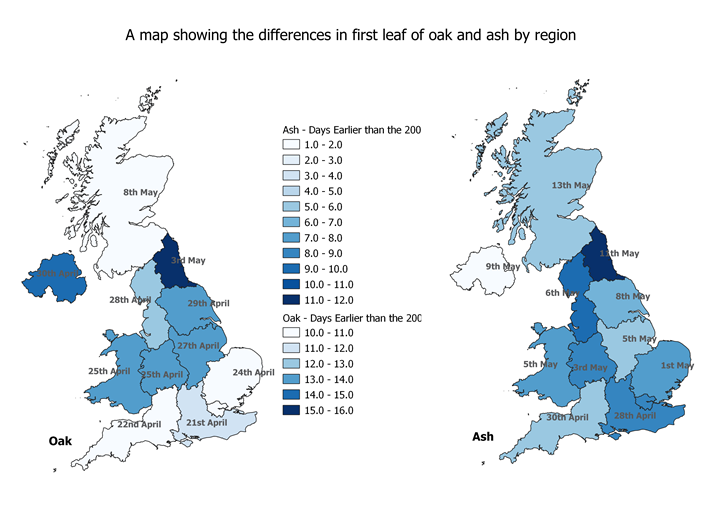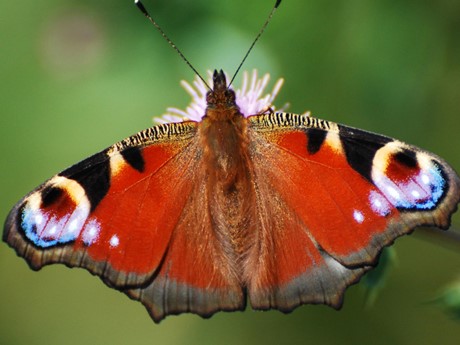Will climate change impact the old adage 'Oak before ash in for a splash'?
Charlotte Armitage, 28/11/2019
I recently carried out a mapping project and decided to use Nature’s Calendar first leaf data for oak and ash to test the old adage. There is now 19 years (2000-2019) of spring data which is a powerful dataset to work with. I calculated the 19 year average of oak first leaf and ash first leaf by region to try and determine how these two species are responding to a changing climate. I then compared these results with the 2001 baseline year and mapped how many days the average was different from the baseline.
As you can see from the map, all regions across both species were earlier than the baseline year, illustrating that the phenology of these two species is getting earlier.

The map shows that for both species the average first leafing date is earlier in the south of the UK than the north, as would be expected. It was thought that the region might have an effect on how much earlier first leaf was having, but as the map shows region seems to have little to no effect in the UK. What the map does clearly show though is that oak trees are responding better to a changing climate than ash.
Oak’s average first leaf is between 10-16 days earlier than the baseline whereas ash’s average first leaf is between 1-12 days earlier. There was also much greater variability with ash which might be based on regional variabilities in the trees (genetics) or it might be because ash is not responding as well to a changing climate. Ash is also suffering from a disease called ash die back which is widespread across the UK and this may be effecting the phenology of this species.

The very first sign of an oak tree first leaf (Photo: Kylie Harrison Mellor)

The very first sign of an ash tree first leaf (Photo: Kylie Harrison Mellor)
As we are facing a changing climate, some species will be able to respond better than others, as is illustrated in the map. Oak first leaf has shifted further from the 2001 baseline than ash. This might mean that in the future we might not be able to use the famous rhyme to predict what summer’s weather might be like.
Add you records to Nature's Calendar and you'll be contributing to a database increasingly used by scientists and policy makers to study the impact of climate change.
